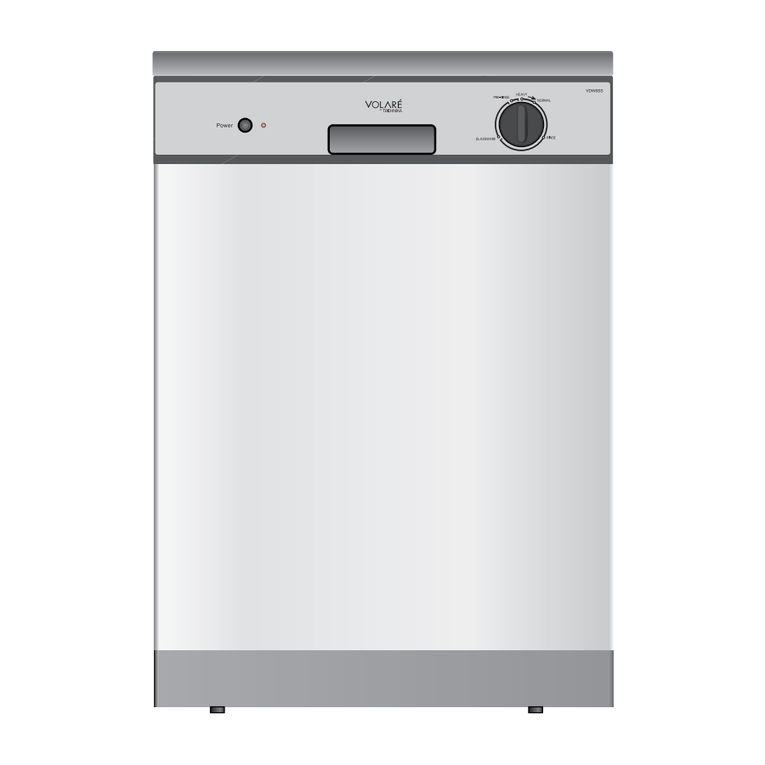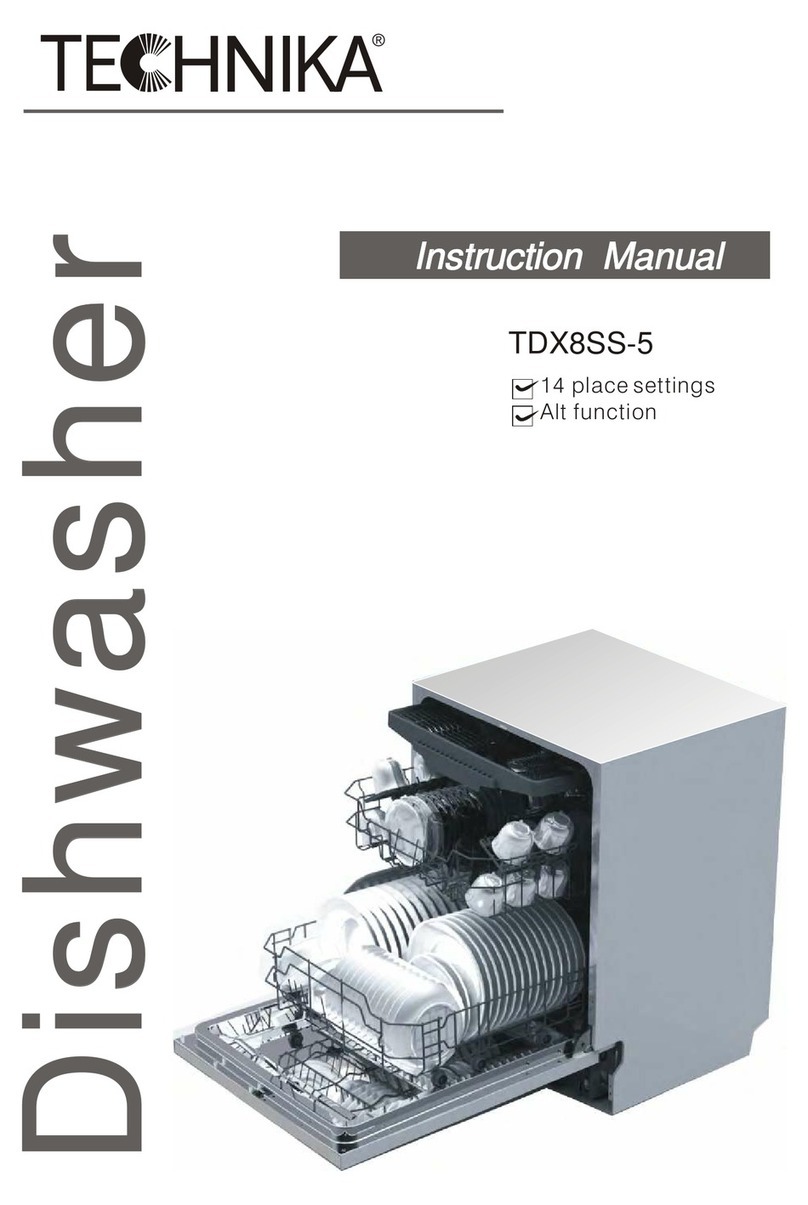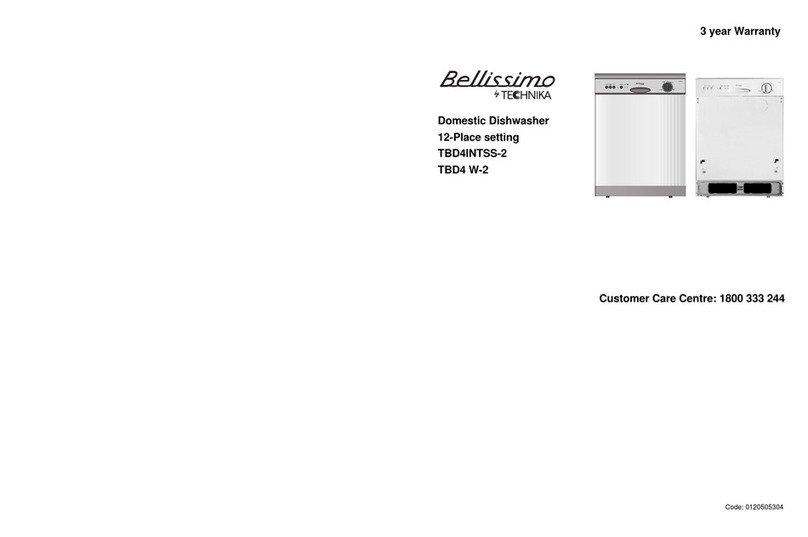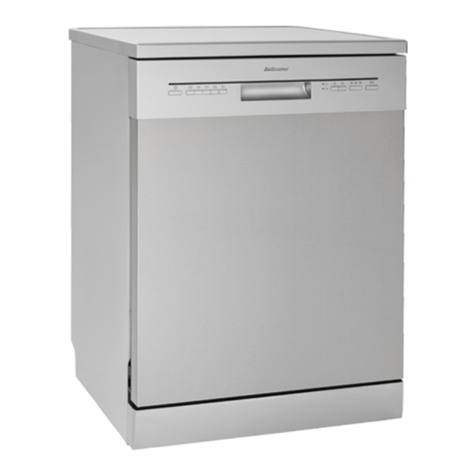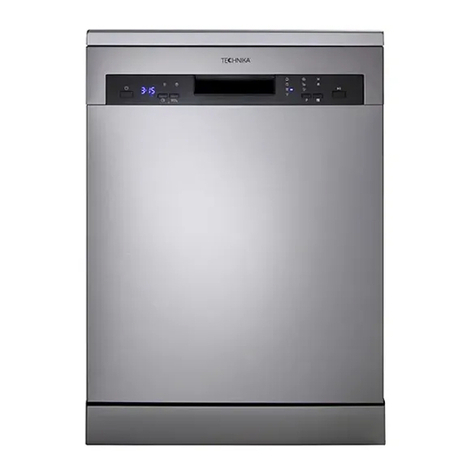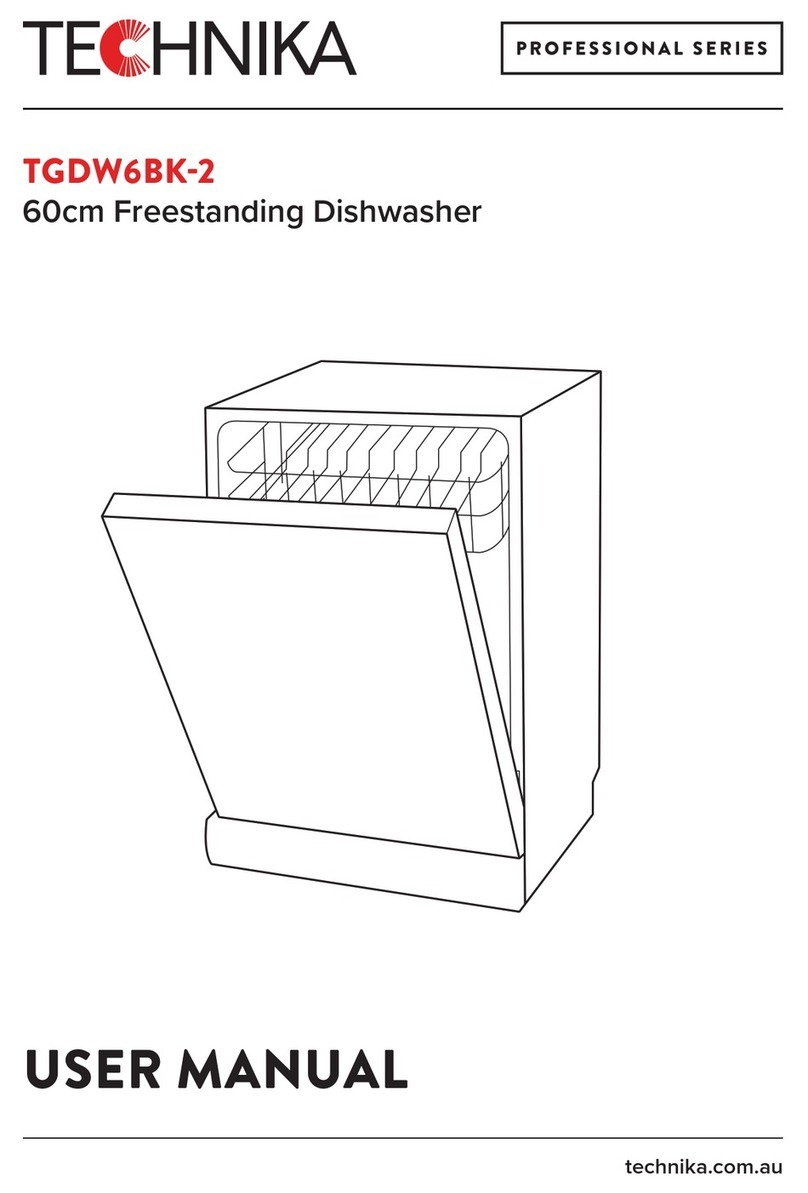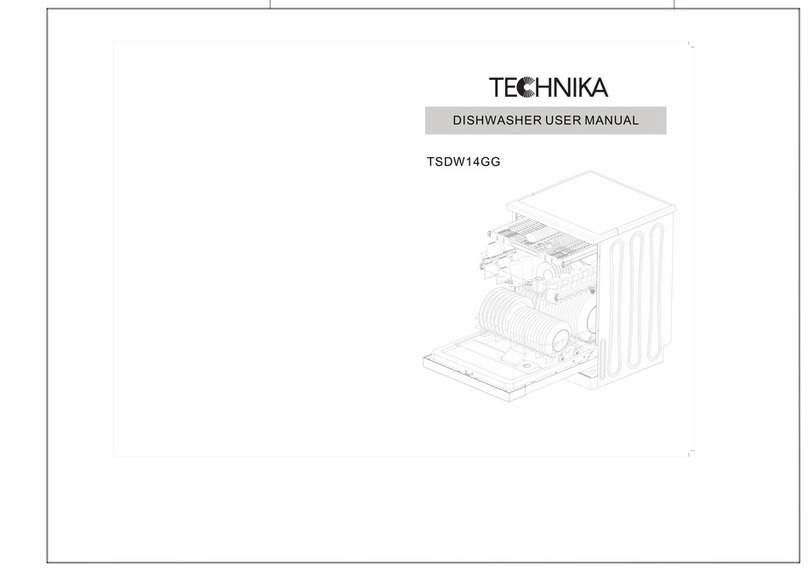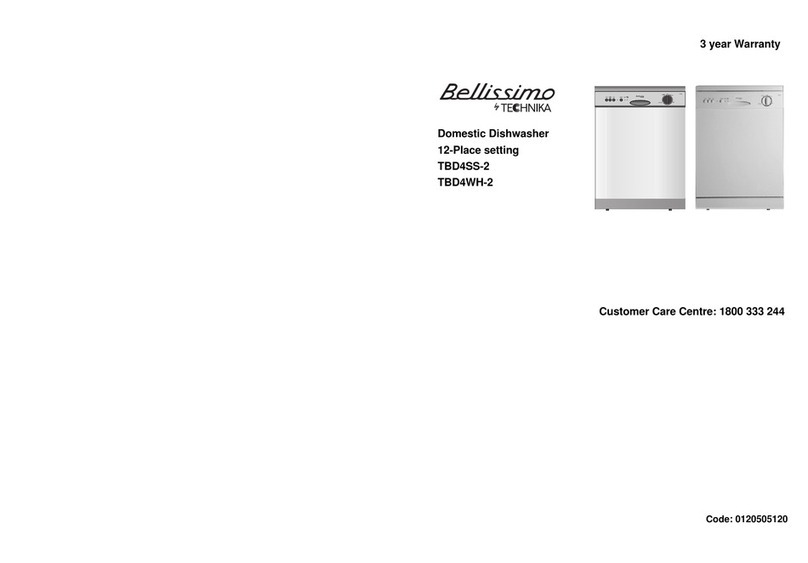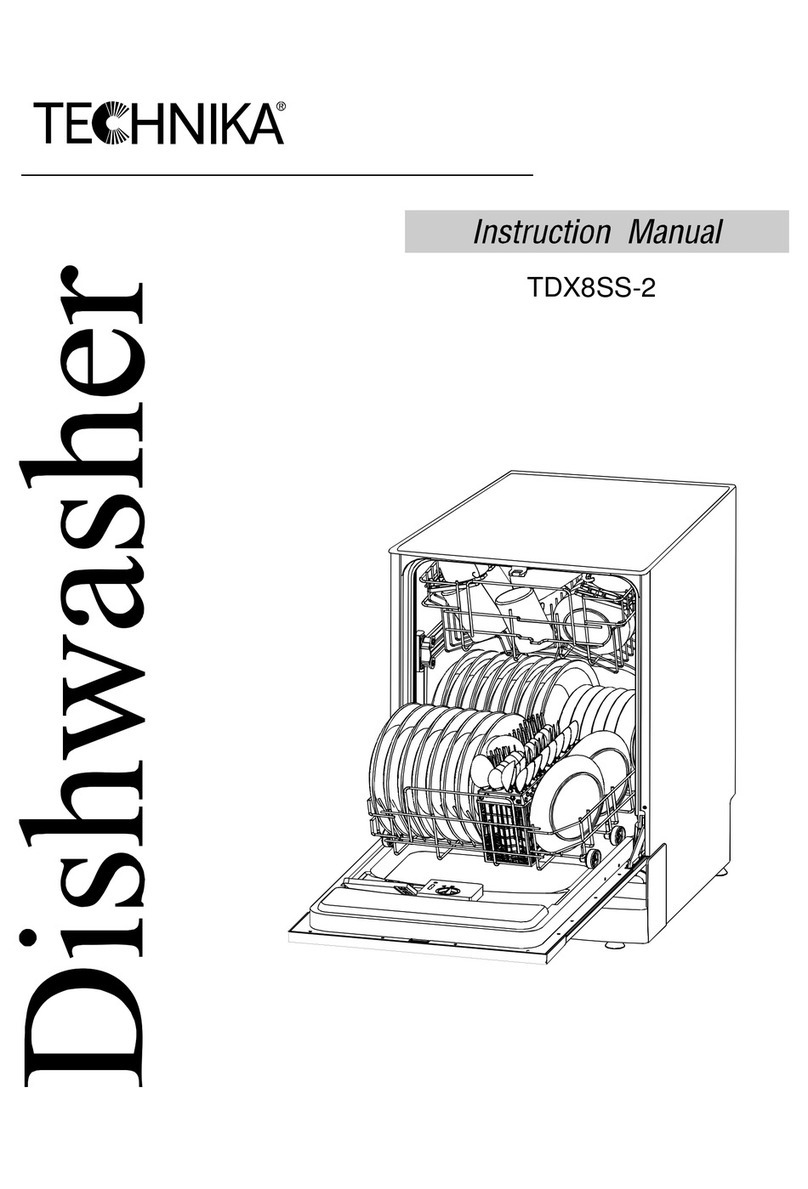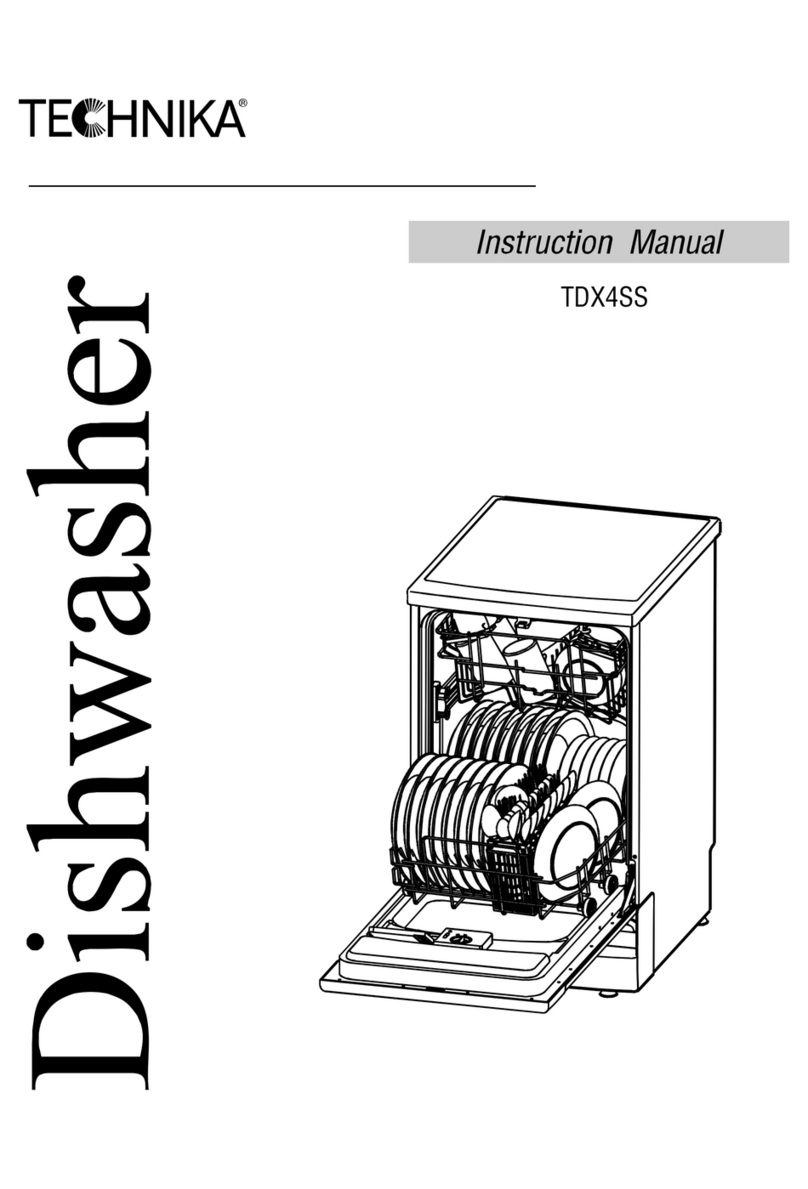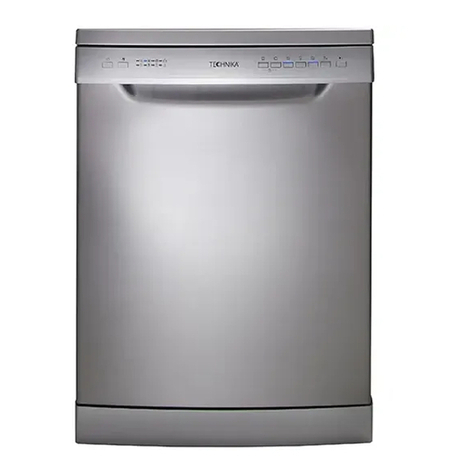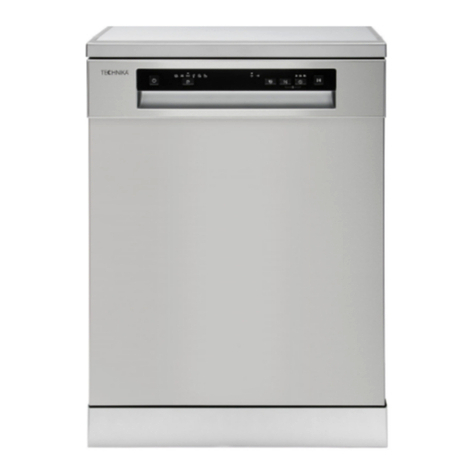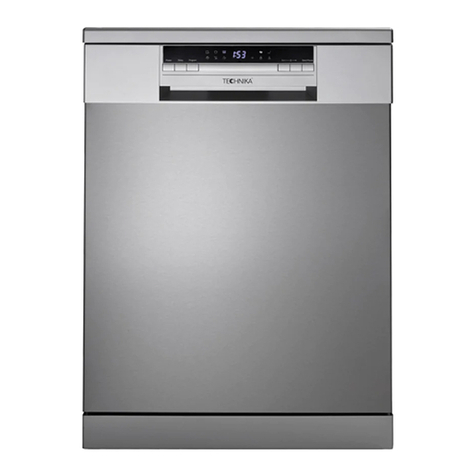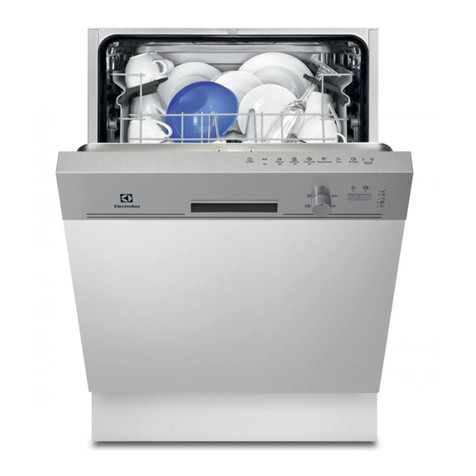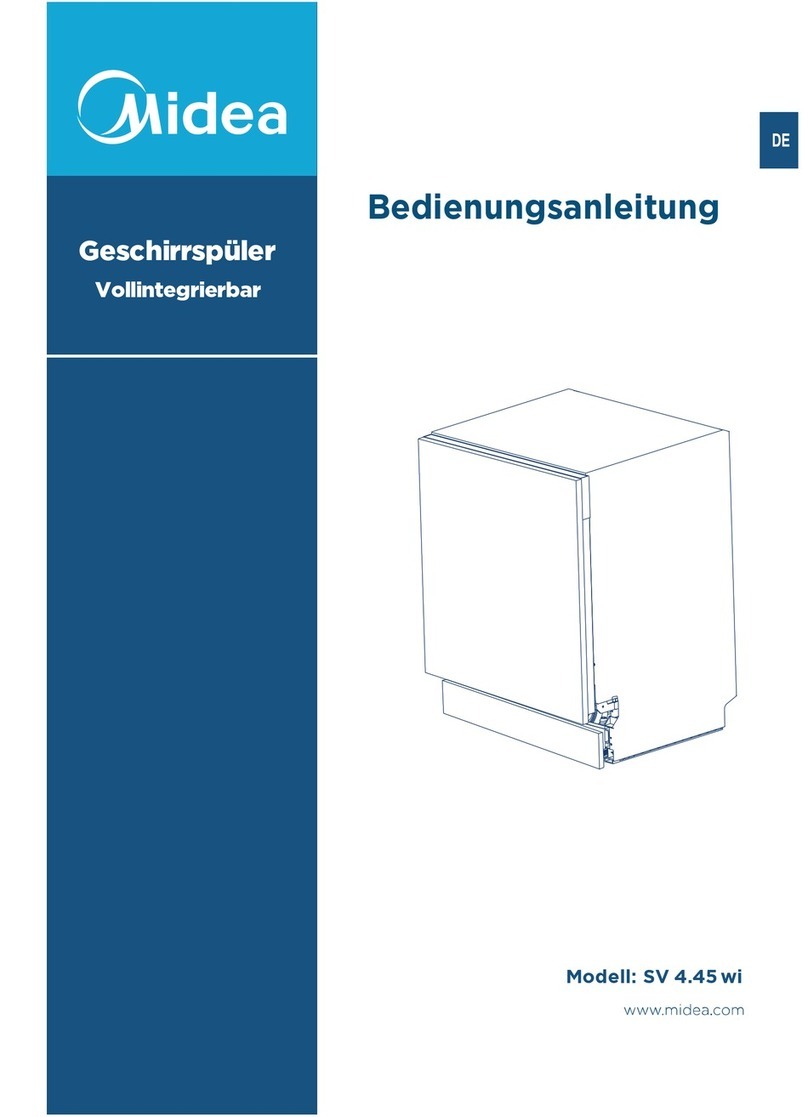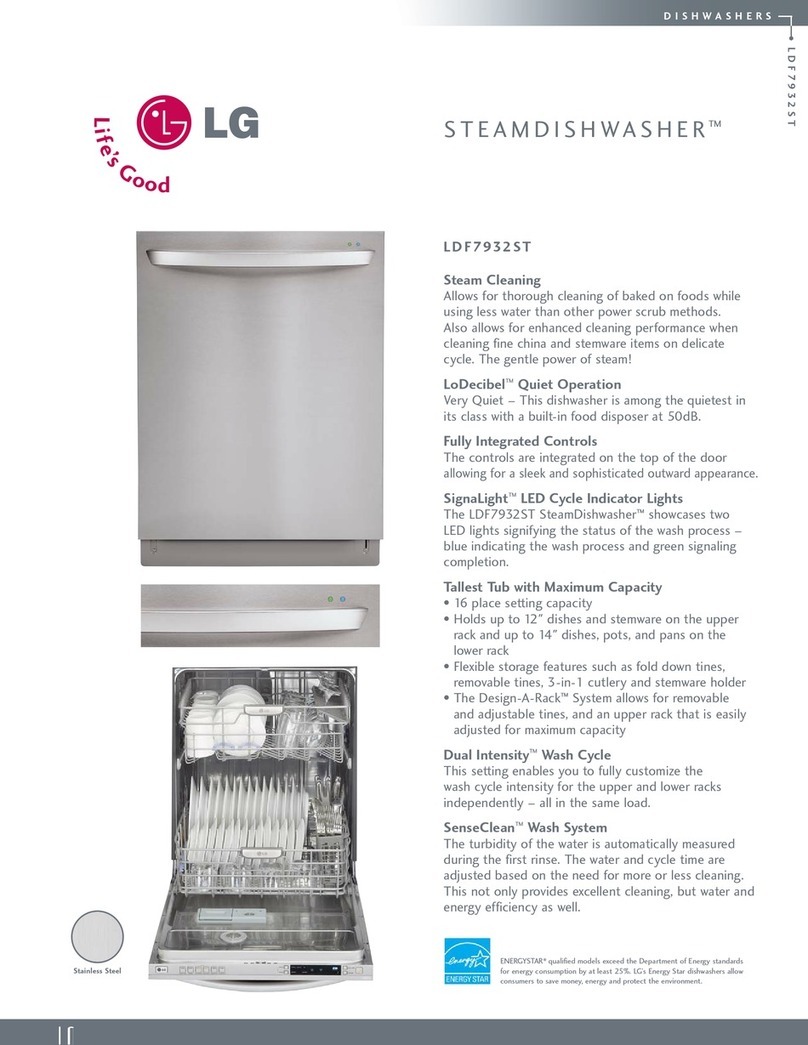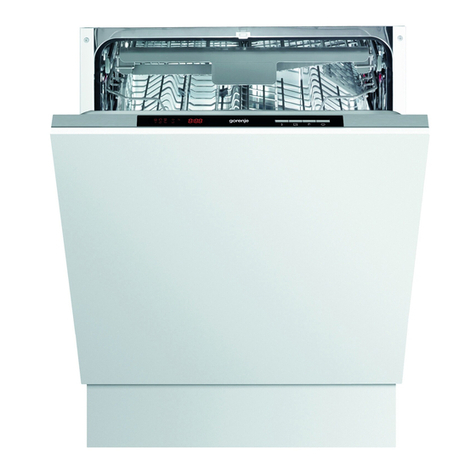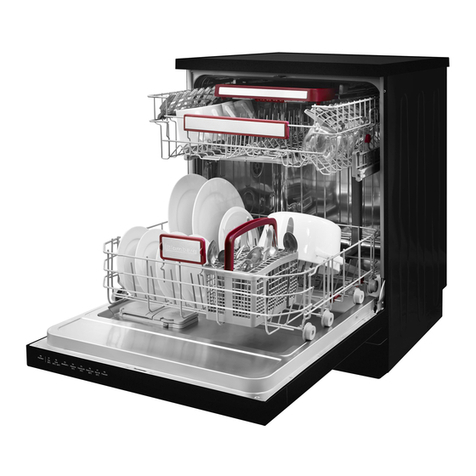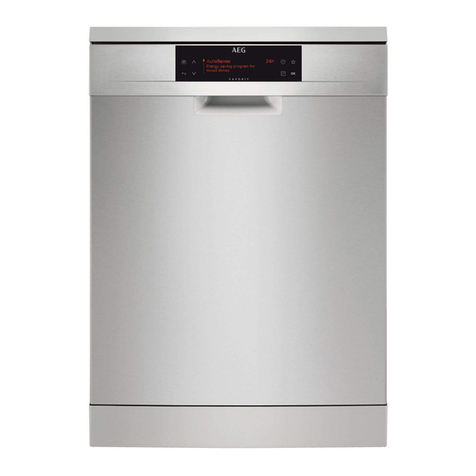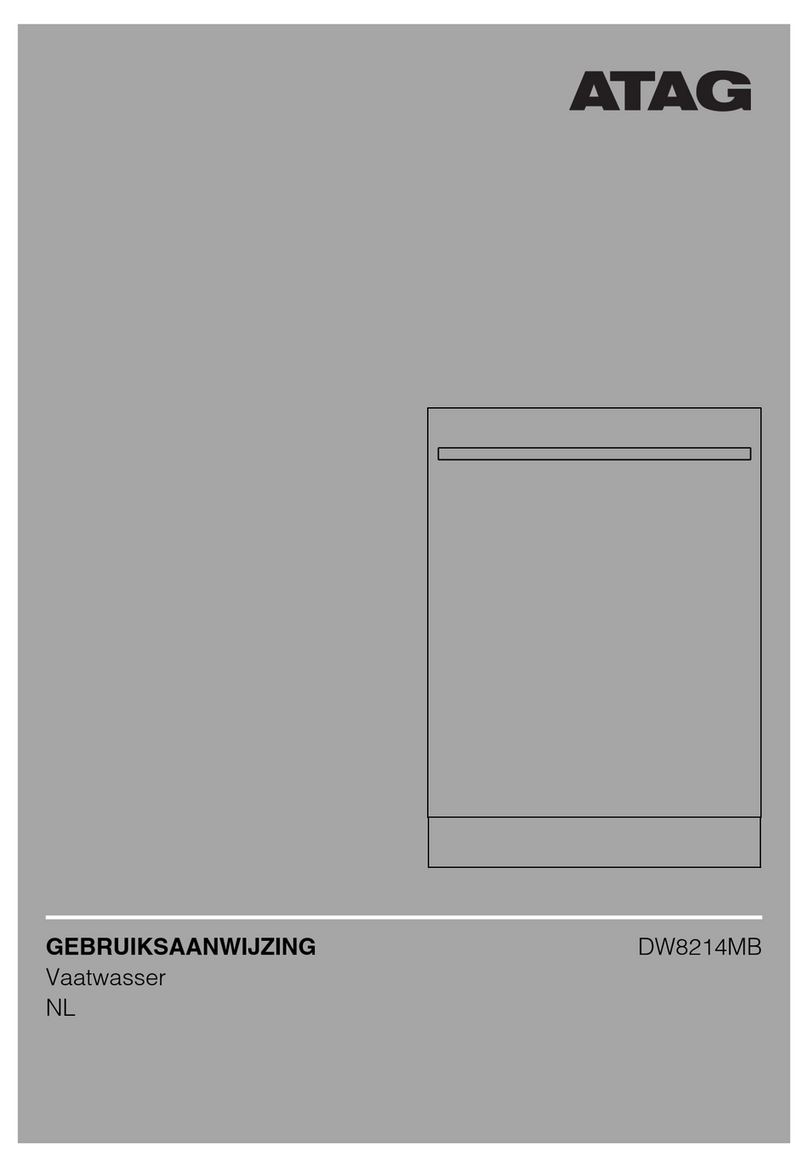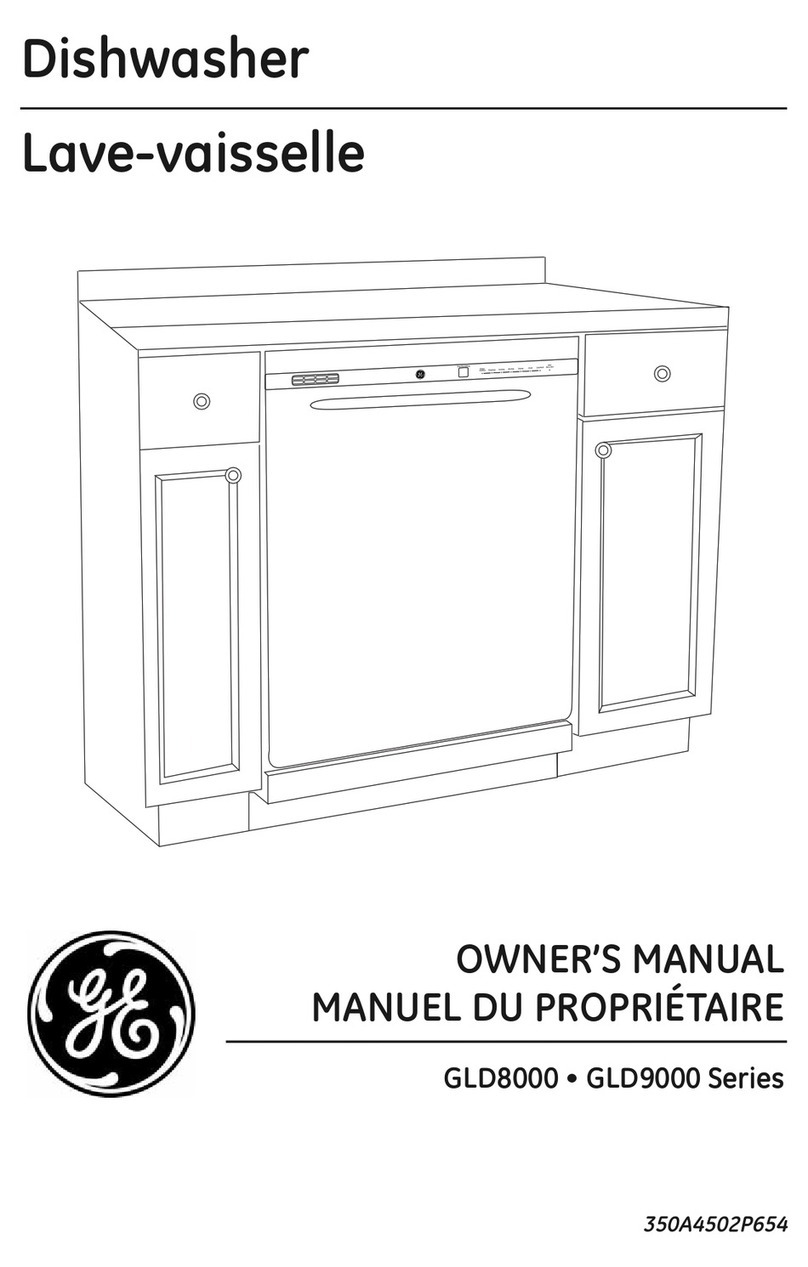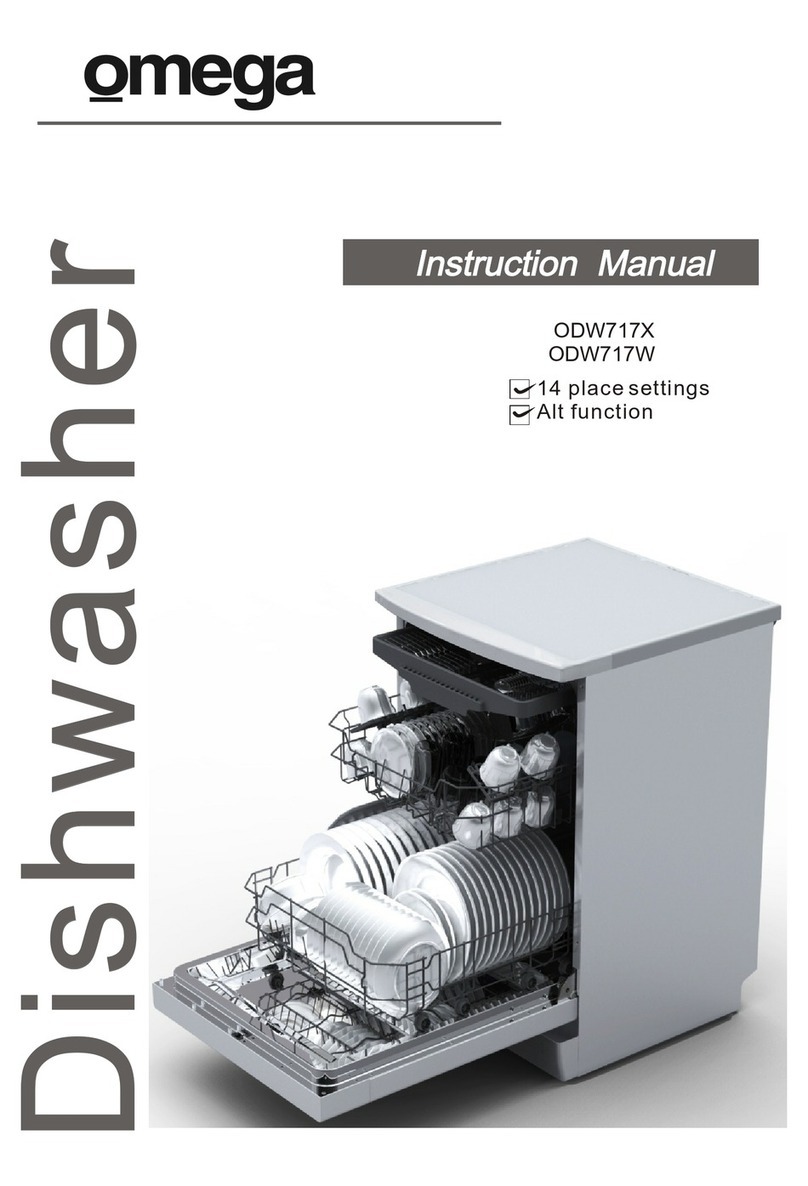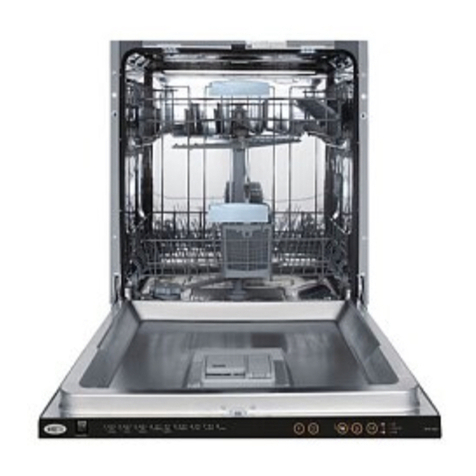
To review the section on Troubleshooting Tips
will help you to solve some common problems
by yourself and not need to ask for the help of
professional technicians.
Dear Customer,
Pleaseread this User Information carefully and keep it
to refer to at a later date.
Pass it on to any subsequent owner of the appliance.
This manual contains sections of Safety Instructions,
Operating Instructions,
Installation Instructions and Troubleshooting Tips etc.
Carefully reading it before using the dishwasher will help
youtouseandmaintainthe dishwasher properly.
The manufacturer, following a policy of constant
development and up-dating of the product, may
make modifications without giving prior notice.
Control Panel......................................... ..........2
Dishwasher Features..................................... ...2
RINSE AID DISPENSER..................................... 3
Detergent........................................................ 5
Attention before or after loading the Dishwasher
Racks............................................................ 6
Removing the Dishes....................................... 6
Wash Cycle Table.............................................10
Turning on the Appliance..................................11
Change the Programme.............. ................11.....
Filtering System..............................................12
Caring for the Dishwasher................................13
A Fill the Rinse Aid Dispenser
、 ...........................3
Adjusting Rinse Aid Dispenser......... ............... 3
B Function of Detergent .......、...........................4
Concentrated Detergent.................................... 4
Detergent Tablets................................. ........... 4
Detergent Dispenser......................................... 4
Amount of Detergent to Use.............................. 4
Fill in Detergent................................................ 5
Loading the upper Rack................................... 6
Adjusting the upper Rack................................. 6
Loading the Lower Rack................................... 7
Folding spikes................................................ 7
Silverware Basket........................................ ...8
Attention!.......................................................9
Possible causes:.............................................9
Suggested remedy...........................................9
At the Ene of the Wash Cycle..............................9
Cleaning Filters...............................................12
Filter assembly...............................................13
Cleaning the Spray Arms..................................13
Protect Against Freezing..................................13
Cleaning the Door...........................................14
.............14HowtoKeepYourDishwasherinShape
Installation preparation...................................14
Water Connection...........................................16
Starting dishwasher.......................................17
Before calling for service.................................18
Error codes....................................................19
Technical information.....................................20
Levelling the Appliance ...................................15
Drain pipe connection.................. .................15..
